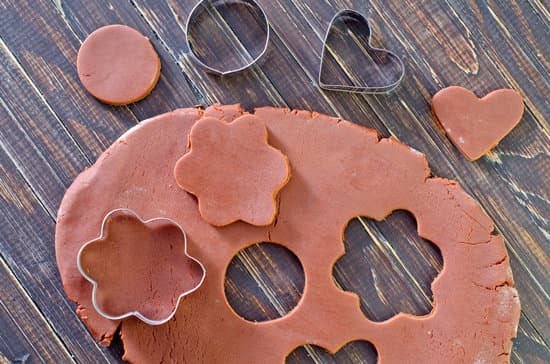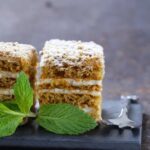Cake decorating is a popular and highly sought-after skill that allows individuals to transform simple cakes into edible works of art. However, while it may seem like a fun and creative endeavor, cake decorating comes with its fair share of complications. From achieving the perfect smooth icing to preventing fondant from cracking or tearing, cake decorators face numerous challenges throughout the process.
Mastering the art of cake decorating requires practice, patience, and attention to detail. In this article, we will explore the various complications that arise when decorating cakes and provide tips and techniques for troubleshooting and overcoming them.
Cake decorating has gained immense popularity in recent years, thanks to social media platforms flooded with jaw-dropping cake designs. Whether it’s for birthdays, weddings, or other special occasions, everyone wants a visually stunning cake. This growing demand places a greater emphasis on the importance of mastering the artistry behind cake decoration.
However, even the most skilled decorators can encounter complications along the way. These challenges can range from issues with icing consistency and texture to problems with fondant application and cake structure stability. The road to creating a flawlessly decorated cake is often paved with air bubbles in the icing, mishaps during crumb coating, leveling challenges, cracking icing, melting fondant, collapsing structures – just to name a few.
In the following sections of this article, we will delve into each specific area of complication in-depth and offer effective solutions to troubleshoot these issues. By understanding the common pitfalls that arise during cake decoration and learning how to overcome them effectively, aspiring decorators can hone their skills and ensure their creations are nothing short of impressive. It’s time to embrace the challenges that come with cake decorating and tackle them head-on.
Common Cake Decorating Complications You Should Know
Cake decorating can be a wonderfully creative and rewarding art form, but it is not without its challenges. As any experienced cake decorator knows, there are numerous complications that can arise during the process. Whether you’re a beginner or a seasoned professional, it’s important to be aware of these potential issues in order to overcome them and create stunning cakes. In this section, we will discuss some of the most common cake decorating complications you should know about.
One of the primary areas where complications can occur is in the icing. Achieving the perfect consistency and texture for your icing can be tricky. It’s not uncommon to encounter problems such as cracking or melting of the icing, as well as unsightly air gaps that can ruin the overall appearance of the cake. Fortunately, there are ways to troubleshoot these issues and achieve smooth and flawless icing on your cakes.
Another challenge that many cake decorators face is working with fondant. Fondant can be temperamental and prone to cracking, tearing, or ripping if not handled properly. Getting an even and smooth surface with fondant requires skill and practice. In this section, we will explore techniques for preventing these frustrations and achieving beautiful results with fondant.
The structure of the cake itself is also a significant factor in cake decorating complications. Cakes that collapse or sink during the decorating process can be devastating for decorators. Improper baking or assembly techniques can impact the stability of the cake and lead to structural failures. We will provide insights on how to properly layer cakes to avoid these problems and ensure a stable base for your decorations.
| Cake Decorating Complication | Description |
|---|---|
| Air bubbles in fondant | Avoiding air bubbles when rolling out fondant can result in a smoother finish on cakes |
| Cracking icing | Understanding the causes of cracking icing and how to prevent it from ruining your cake |
| Cake collapsing during decorating | Tips for ensuring a stable cake structure to prevent collapsing or sinking |
Troubleshooting Icing Issues
Icing plays a crucial role in cake decorating, as it serves as a smooth canvas for further decorations. However, various complications can arise when working with icing. It is important to address these issues to ensure that your cakes have flawless and visually appealing finishes. In this section, we will explore common problems with icing consistency and texture and provide tips on achieving smooth and flawless icing on cakes.
One of the most common problems with icing is its consistency. The consistency of the icing can greatly impact its ease of application and overall appearance on the cake. If the icing is too thin or runny, it may not adhere properly to the cake and could slide off. On the other hand, if the icing is too thick, it might be difficult to spread evenly and can result in a lumpy or uneven surface.
To achieve the ideal icing consistency, it’s crucial to follow specific recipes or guidelines provided by experts. Adding small amounts of liquid (such as milk or water) gradually while mixing the icing can help adjust its thickness. Conversely, if your icing is too runny, you can try adding more powdered sugar to thicken it up.
Another common issue with icing is air gaps or bubbles that form during application. These imperfections can mar the smoothness and professional finish of your cake design. To mitigate this problem, one technique you can use is tapping the cake gently against a flat surface after applying each layer of icing. This motion helps release trapped air bubbles.
Here are some useful tips for achieving smooth and flawless icing:
- Start with a crumb coat: Before applying your final layer of frosting, it’s recommended to apply a thin layer called a “crumb coat.” This coat locks in any loose crumbs into the initial layer and acts as a base for subsequent layers.
- Use an offset spatula: An offset spatula allows for precise control when spreading and smoothing the icing on the cake.
- Practice patience: Take your time when working with icing. Slow and steady movements will result in a neater finish and minimize the chances of generating air bubbles.
| Issue | Cause | Solution |
|---|---|---|
| Icing too thin or runny | Excessive liquid added to the icing | Add more powdered sugar gradually to thicken the icing |
| Icing too thick or stiff | Insufficient liquid added to the icing | Add milk or water gradually to thin out the icing |
| Air gaps or bubbles in icing | Air trapped during application of the icing | Tap the cake gently against a flat surface after each layer of icing to release air bubbles |
By troubleshooting these common issues and following these tips, you can achieve smooth and flawless icing on your cakes, creating visually appealing designs that will impress your friends, family, and clients. Remember, practice makes perfect, so don’t be discouraged if it takes some time to master this skill.
Tackling Fondant Frustrations
When it comes to cake decorating, working with fondant can often be a daunting task. Fondant is a versatile and popular medium for creating smooth, flawless finishes on cakes, but it also presents its own set of challenges. In this section, we will discuss the common frustrations that arise when working with fondant and share tips on how to overcome them.
One of the most common issues cake decorators face with fondant is cracking, tearing, or ripping. This can occur when rolling out the fondant too thin or when not properly preparing the surface underneath. To prevent cracking, make sure to knead the fondant thoroughly until it becomes pliable and easy to work with. Additionally, ensure that your work surface is clean and lightly dusted with powdered sugar or cornstarch to prevent sticking.
Achieving an even and smooth surface on a cake covered in fondant can also be a challenge. Uneven surfaces or bumps may appear due to improper rolling or handling of the fondant. To avoid this issue, start by covering your cake with a thin layer of buttercream frosting or ganache known as a crumb coat. This will create a smooth base for the fondant to adhere to and help prevent any imperfections from showing through.
Once you have applied the crumb coat, roll out your fondant into a large sheet using a rolling pin dusted with powdered sugar or cornstarch. Carefully drape the rolled-out fondant over your cake and gently smooth it down using your hands or a fondant smoother tool.
Work from top to bottom and use gentle strokes to eliminate any air bubbles or wrinkles. If necessary, trim off any excess fondant at the bottom of the cake using a sharp knife for neat edges.
By following these tips and techniques, you can tackle those frustrating moments that often come with working with fondant. Remember to take your time, be patient, and practice regularly. With experience and persistence, you will gradually master the art of fondant application and achieve beautifully finished cakes that will impress both yourself and others.
Dealing with Cake Structure Problems
When it comes to cake decorating, one of the most frustrating complications that decorators can encounter is problems with the cake’s structure. Issues such as collapsing or sinking can quickly turn a beautifully decorated cake into a disaster. However, with proper techniques and attention to detail, these problems can be avoided.
One common issue related to cake structure is improper layering and filling. If the layers are not properly aligned or if too much filling is added, it can lead to instability and collapse. To avoid this, it’s essential to ensure that each layer is level and evenly filled. Using a cake leveler or serrated knife can help achieve an even surface for each layer, providing a stable foundation for the rest of the cake.
Another factor that can affect the cake’s stability is improper baking and assembly techniques. Overbaking can result in dry and crumbly cakes that are prone to falling apart. On the other hand, underbaked cakes may be dense and sink in the middle. It’s crucial to follow baking instructions carefully and use an oven thermometer to ensure accurate temperatures.
Proper assembly techniques are also vital for maintaining cake structure. When stacking layers, it’s important to use support dowels or straws between tiers, especially for tall cakes. These dowels provide stability and prevent layers from collapsing onto each other. Additionally, ensuring that the layers are properly leveled before stacking will contribute to a structurally sound cake.
By paying attention to these factors during the baking and assembly process, decorators can avoid common cake structure problems and create visually stunning cakes that stand tall throughout any celebration.
To help you navigate through these hazards of decorating cakes we have compiled a list of helpful tips:
- Level each layer using a cake leveler or serrated knife.
- Fill each layer evenly, without overdoing it.
- Follow baking instructions carefully and use an oven thermometer for accuracy.
- Use support dowels or straws when stacking multiple tiers.
By following these tips, decorators can ensure a stable and structurally sound cake that serves as the perfect canvas for their artistic creations.
The Art of Corrective Measures
Fixing Icing Imperfections
When it comes to cake decorating, achieving smooth and flawless icing is key. However, there are times when issues with icing consistency or texture may arise. One common problem is cracking, which can happen if the icing is too dry. To fix this, simply apply a small amount of additional icing to the cracked area and smooth it out gently with a spatula or an offset spatula.
Another issue that can occur with icing is melting, especially in warm weather or under hot lights. To prevent this, make sure to keep your cake refrigerated until right before serving. If melting does occur, try chilling the cake for a few minutes to solidify the icing again. For unsightly air gaps in the icing, you can use a small piping tip or toothpick to carefully fill in these areas with additional icing.
Saving Fondant Disasters
Working with fondant can be both exciting and frustrating. One of the most common challenges faced by cake decorators is preventing cracking, tearing, or ripping of fondant while applying it to the cake. To avoid this issue, ensure that your fondant is rolled out evenly and not too thin. Gently drape the rolled-out fondant over the cake using your hands or a rolling pin.
If you do encounter cracking or tearing, don’t panic. You can easily patch up these areas by using a bit of water as glue and gently blending in additional fondant to cover the imperfections. Smooth out any visible seams using your fingertips or a fondant smoothening tool for a seamless finish.
Solving Structural Problems
Cake structure problems such as collapsing or sinking are nightmares for any cake decorator. To prevent these issues, it’s important to properly layer cakes during assembly and adhere them together with enough support from dowel rods if necessary. This will help distribute the weight evenly and ensure a stable structure.
Improper baking techniques can also affect the cake’s stability. Always follow the recipe carefully and make sure your batter is well-mixed to avoid uneven rising or sinking in the center. If you do encounter structural failures, don’t despair. You can salvage the cake by carving it into a different shape or adding additional support with dowel rods or even sturdy cardboard cutouts.
By understanding and implementing these corrective measures, you’ll be better equipped to handle common cake decorating complications. Remember, practice makes perfect, so don’t be discouraged if it takes some trial and error to master these techniques. With patience and attention to detail, you’ll overcome any challenges that come your way in the world of cake decorating.
Preventing Cake Decorating Complications
Cake decorating is an art form that requires skill, precision, and creativity. While it may seem daunting, there are ways to prevent complications and ensure a successful cake decorating experience. By taking the time to properly plan and prepare, practicing patience, and paying attention to detail, you can avoid many common cake decorating pitfalls.
Proper Planning and Preparation
One of the most important steps in preventing cake decorating complications is proper planning and preparation. Before you even start decorating your cake, it is essential to have a clear vision of what you want to achieve. Consider the theme or occasion for which the cake is being made and plan the design accordingly. Gather all the necessary tools and ingredients before beginning the process.
Additionally, make sure you have enough time set aside for each step of the decorating process. Rushing through any stage can lead to mistakes or subpar results. Give yourself enough time to mix and color icing/fondant, level and stack cakes, and decorate with precision.
Practice Makes Perfect
Another key aspect of preventing complications in cake decorating is practice. Even professional decorators began as beginners who made mistakes along the way. Set aside time to practice your techniques on a small scale before attempting larger projects. This will allow you to become familiar with different tools, textures, colors, and icing consistencies.
Patience is vital during practice sessions as well as when working on actual cakes. Take your time to perfect each step of the process without rushing through it. Patiently smooth out icing or fondant surfaces using a spatula or any other smoothing tool.
Attention to Detail
Attention to detail is crucial in preventing complications during cake decorating. Small errors in measurement or assembly can lead to significant problems later on. Measure ingredients accurately when mixing batter or preparing icing/fondant.
When leveling cakes for stacking or torting, ensure that they are evenly cut. This will prevent uneven layers and instability in the final structure. Pay close attention to the consistency of your icing and fondant, as too runny or too stiff can make it difficult to achieve the desired texture.
Learning from Professionals
When it comes to cake decorating, learning from experienced professionals can be incredibly valuable. These experts have spent years honing their skills and gaining knowledge, and they can offer invaluable advice and guidance to aspiring cake decorators. Whether you are a beginner or have some experience in cake decorating, seeking expert advice can help you improve your techniques, overcome challenges, and prevent complications.
One way to learn from professionals is by attending workshops or classes conducted by experienced cake decorators. These hands-on sessions allow you to observe the techniques and methods used by experts up close. You can also ask questions directly to the instructor and get personalized feedback on your work. Many professional cake decorators offer workshops either in person or online, providing opportunities for aspiring decorators from all over the world.
Additionally, there are numerous resources available online that provide expert advice on cake decorating. Websites dedicated to baking and cake decorating often feature tutorials, tips, tricks, and troubleshooting guides shared by established professionals in the industry. Online forums where cake decorators gather to share ideas and experiences can also be an excellent resource for learning from experts. These platforms provide a space for individuals to ask specific questions and receive answers directly from experienced practitioners.
Books written by professional cake decorators are another valuable resource for learning the art of cake decorating. These publications often cover a wide range of topics such as advanced techniques, specific styles or themes of cakes, troubleshooting common complications, and more. Reading books written by experts allows you to delve deeper into their knowledge and gain insights that may not be readily available elsewhere.
Conclusion
In conclusion, cake decorating is an art that requires skill and precision. Throughout this article, we have explored the various complications that can arise during the cake decorating process, including issues with icing, fondant, and cake structure. However, it is important to remember that these complications are not insurmountable. With the right techniques and troubleshooting methods, these challenges can be overcome.
It is crucial to embrace the challenges that come with cake decorating and view them as opportunities for growth and improvement. Even professionals in the industry face complications from time to time. Therefore, it is essential not to get discouraged when things don’t go according to plan. Instead, learn from your mistakes and use them as stepping stones towards honing your skills.
Practice, patience, and attention to detail are key in cake decorating. By dedicating time to practice and continuously learning new techniques, you will develop the necessary expertise to tackle any complication that comes your way. Additionally, proper planning and preparation before starting a cake decorating project can help prevent many issues from occurring in the first place.
Lastly, don’t forget to seek inspiration and guidance from experienced cake decorators. Learning from their expertise can provide valuable insights and shortcuts to improving your own skills. There are numerous reputable resources available online as well as books dedicated to the art of cake decorating.
Frequently Asked Questions
How do you fix cake decorating mistakes?
When it comes to fixing cake decorating mistakes, there are a few approaches you can take depending on the nature of the mistake. If you’ve made a small icing error or smudged a design, you can use an offset spatula or knife to gently scrape off the mistake and smooth out the area. Another option is to cover up the mistake with additional decorations like sprinkles, edible flowers, or even grated chocolate.
If you’re dealing with larger issues such as uneven frosting or major design flaws, it might be best to remove most of the icing and start over from scratch. Remember, practice makes perfect in cake decorating, so don’t get discouraged by mistakes – they can often lead to new creative ideas and improved techniques.
Why won’t my icing stick to the cake?
There could be several reasons why your icing won’t stick to the cake properly. One common reason is that the cake may not be completely cooled down before you start applying the icing. Warm cake layers can cause the butter or shortening in your icing to melt, making it difficult for it to adhere properly. Make sure your cakes are cooled completely before attempting to frost them.
Another factor could be that your icing is too thin or runny. This could happen if you’ve added too much liquid (such as milk or water) during the preparation process. To fix this issue, you can add more powdered sugar gradually until you reach a thicker consistency that will stick better to the cake surface.
Why are my cake layers sliding?
Cake layers sliding is often caused by insufficient frosting between them or inadequate support when layering multi-tiered cakes. If your layers aren’t sticking together properly due to lack of frosting, one solution is to apply a thin layer of buttercream or ganache between each layer before stacking them together. This acts as a “glue” that helps hold everything in place and prevents sliding.
Additionally, inserting wooden dowels into tiered cakes provides structural support and helps distribute weight evenly, minimizing the chances of layers shifting or sliding. Another factor to consider is the consistency of your frosting – if it’s too soft or “slippery,” it may not be providing enough stability. Adjusting the ratio of butter to powdered sugar in your recipe can help create a firmer, more stable frosting that keeps your layers intact.

Welcome to our cake decorating blog! My name is Destiny Flores, and I am the proud owner of a cake decorating business named Cake Karma. Our mission is to provide delicious, beautiful cakes for all occasions. We specialize in creating custom cakes that are tailored specifically to each customer’s individual needs and tastes.





